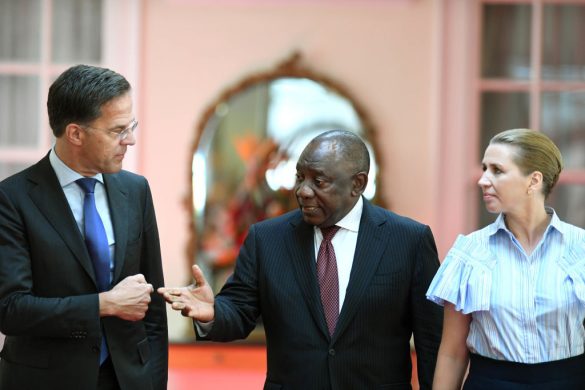Hver tredje i den nordlige del af Elfenbenskysten lider af kronisk fejlernæring. Under oprørernes styre er den nordlige del af landet gået tilbage økonomisk, og flere hjælpeorganisationer har trukket sig ud af regionen.
ABIDJAN, 9 April 2014 (IRIN): Forty percent of Ivoirian children in the northern region are chronically malnourished, the country’s highest rate, which has not fallen for the past six years. The effects of a drawn-out conflict, desertion by aid groups and inadequate medical staff have contributed to the situation. Food scarcity here is often due to harsh weather and high food costs.
The average rate of chronic malnutrition nationally is not much lower though, at 30 percent. Côte d’Ivoire’s northern region is mostly arid and on the fringes of the Sahel. Malnutrition levels here compare to Niger’s 40 percent and are slightly higher than Burkina Faso’s 34 percent.
The 2002-2009 political turmoil that split Côte d’Ivoire into rebel-held north and government-controlled south devastated public services in the in the north. Under rebel rule, private firms also fled, while the economy tumbled and insecurity rose. The region was, however, spared much of the violence sparked by the 2010 election dispute.
“The crisis significantly weakened the already precarious food security levels in this part of the country. Population displacements disrupted agricultural activities from 2002 to 2005,” said Bernard Kouamé, a nutrition expert based in the commercial capital Abidjan.
“Health infrastructure was degraded. The absence of health personnel for months on end and the fracturing of the health system greatly affected access to health services. The country has not totally recovered from these problems,” he said.
The withdrawal of aid organizations such as Action Against Hunger (ACF) in 2011 also reversed some improvements in nutrition among children under five, Kouamé noted.
Loréaux Thomas, ACF’s chief of mission said: “At the moment we are not planning to return to the north. We don’t have the funding. If there’s need for emergency response for malnutrition, it’s the government or UNICEF [UN Children’s Fund] to take charge.”
“The humanitarian organizations played an important role against malnutrition. Fortified foods [donated by aid groups] helped many women, but since their departure we no longer have food and fewer women are coming to our nutrition centres,” said Diarrassouba Issouf of the Family Protection Unit in the northern city of Korhogo.
Nutrition centres now rely on local foods to fight malnutrition, but many women are unable to afford such foods due to extreme poverty, Issouf said. The government in 2008 began setting up nutrition centres at health centres and hospitals. So far, 14 nutrition centres have been established in the northern and eastern regions.
“NGOs and development partners are willing to help fight malnutrition through rapid diagnosis and donating equipment, but sometime down the line we find ourselves abandoned with no further support,” said an NGO official in northern Côte d’Ivoire who preferred anonymity.
Few physicians
Læs hele artiklen her: http://www.irinnews.org/report/99907/chronic-malnutrition-dogs-c%C3%B4te-d-ivoire-s-north














